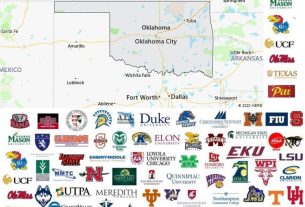PREHISTORY
Located in the center of the region where the megalithic superior civilizations were born and developed, Ecuador presents among the most remote finds of its archaeological areas the dolichocephalic skull of Punin, very similar to the Brazilian race of Lagoa Santa: it is deduced that the first population of the region is due to tribes from the Amazon River basin; the second was made up of brachycephalic individuals from the Caribbean – Araucan nucleus, who absorbed the dolichocephalic groups and introduced their dialect, metalworking and skull reduction; a third stratum of the population was formed by the merger of the previous groups with others that came from the central and Andean areas (chibcha and maya – quiché). In pre-Inca times these populations lived in clans (ayllu), each with its own totemic deity and its own dialect. Some of these clans expanded to become a nation. Powerful confederations were also formed, but in the century. XII they had to give in to the expansionism of the Incas. At the beginning of the century. XVI the Inca Huayna Cápac he transported the capital to Quito, which became the center of a vast empire extending over a million km². At his death (1525) the empire was divided between his two sons and Quito remained the capital of the part assigned to Atahualpa (1525-33).
HISTORY: THE PRESIDENCY OF VELASCO IBARRA
In 1859 the figure of Gabriel García Moreno emerged. A practicing Catholic to the point of fanaticism, he ascended to the presidency of the Republic with the precise program of defending the Church, to which he closely linked the State. In 1861 he entered into a concordat with the Holy See which submitted Ecuadorian public life to the will of the ecclesiastical authority. Replaced in 1865 by Jerónimo Carrión, who joined Chile and Peru to crush Spain’s attempt to recover the ancient South American colonies, he resumed power in 1869 and accentuated the rigor of his sectarian integralism, arousing such discontent that he was assassinated (1875). Years of chaotic administration followed and only the liberal Eloy Alfaro came to the presidency, in 1895, made possible the return of peace. He modified the Constitution, making it “enlightened” and tolerant. It also sought to modernize the country, encouraging the opening of new roads, the construction of railways (for example, Guayaquil-Quito) and the opening of schools. He exercised two mandates: from 1895 to 1902 and from 1906 to 1911. Just at the end of his second term of government, yet another revolt broke out and Alfaro died assassinated. Colorless characters followed the presidency. In the meantime, the situation had changed: new forces had appeared and pressed on the government to obtain greater social openings, suited to the needs of an awakening country. Socialist movements and trade unions frontally challenged the liberal-conservative dominance. The decade following the world crisis of 1929 was very convulsive for Ecuador: riots, strikes and military pronunciamientos followed one another relentlessly. In 1940 the liberal-radical Carlos Arroyo del Rio obtained the presidency: calm seemed to be restored, but the outbreak of a war with Peru, for the possession of vast Amazonian areas, once again postponed the solution of internal problems. Military operations ceased in January 1942, when a peace protocol was signed in Rio de Janeiro, guaranteed by Argentina, Brazil, Chile and the United States. Most of the disputed territories were assigned to Peru: Quito, at the time, had to yield, but never ceased to demand the revision of the treaty.
According to usprivateschoolsfinder, Ecuador, however, sided with the United States and other American republics against European Nazi-fascism and Japan. In 1944 the army imposed the presidency of Velasco Ibarra, but deposed him three years later for its dictatorial systems. In 1948 he became president Galo Plaza Lasso, candidate of the Civic-National Democratic Movement. The result was a government that succeeded in carrying out its mandate. In 1952 Velasco Ibarra returned to the presidency, retiring four years later, to make way for the conservative Catholic Camillo Ponce Enríquez; the votes of June 1960 brought him back, at the age of sixty-seven, to the leadership of the country. Trained by experience, the elderly caudillo played the nationalism cardto retain power; thus, in Riobamba, on August 17 of that year he unilaterally proclaimed the nullity of the Rio Protocol, reopening the question of the borders with Peru. Lima and the four guaranteeing powers replied, confirming the validity of the document. On November 8, 1961, Velasco Ibarra was again sacked and replaced by the current vice president, Carlos Julio Arosemena. Not even this development proved to be lasting: on 11 July 1963 the military also ousted Arosemena and took control of the Republic through a council of four chaired by Rear Admiral Ramón Castro Jijón. Disagreements between the armed forces resulted in the overthrow of the junta (March 29, 1966). After other experiences of transition, free elections were held on 2 June 1968: the choice again fell on Velasco Ibarra. Its skillful demagogy did not help him and, having not given concrete answers to the progressive demands of the popular classes, who had also voted for him, in 1972 he had to resign himself once again to ceding power to the army. On February 15 of the same year, General Guillermo Rodríguez Lara placed himself at the head of the nation and established a government mainly of technicians. The presidency of Rodríguez Lara also had a very troubled life by disputes and conspiracies especially by the elements of the most extremist right and the military, until a new coup (January 1976) brought to the government a military junta headed by Admiral Alfredo Poveda Burbano, who set out to restore a democratic regime in the country.


